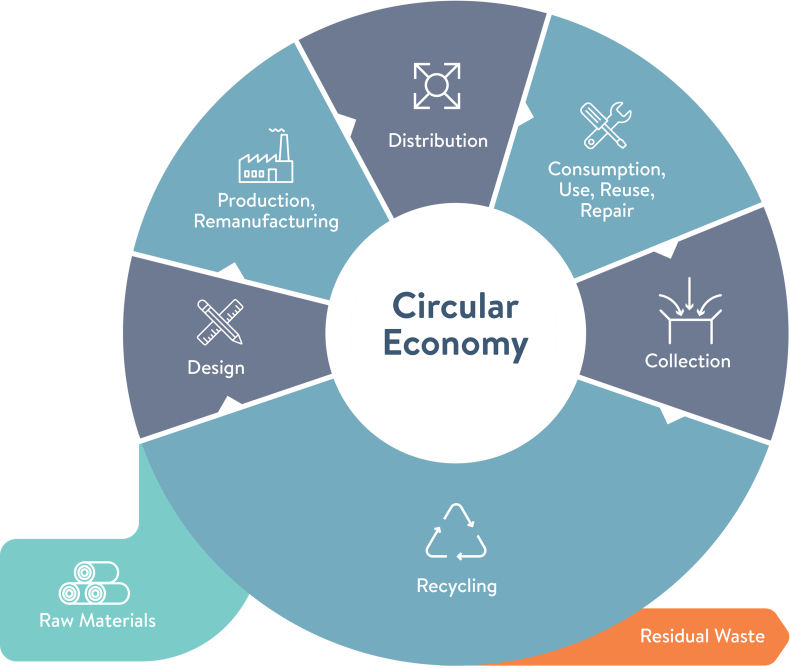
What is the Circular Economy?
This simple and clear explanation of the Circular Economy is with acknowledgement and thanks from The Rediscovery Centre, the National Centre for the Circular Economy.
Our current economic system is not circular, it is linear. To explain that, we have to look at the way we currently live. In a linear world, we take raw materials from nature like concrete, wood and metal to make products – anything from buildings to bookshelves or batteries. These are used for a short time and then demolished or thrown away. A society that is based on taking, making, and disposing relies on the continual mining or harvesting of raw materials, which is a major driver of climate change and biodiversity loss. The way we live in Ireland and in most European countries is unsustainable, depleting the world’s limited resources and creating ever more waste. If every human used as many resources as Europeans, we would need 2.6 Earths to support our population. Realising the limits of our planet’s resources, a new way of thinking has emerged: the circular economy. The circular economy aims to create positive value for society, economy and the environment.
The circular economy is inspired by nature, where we use products wisely and try to get the most value out of them. Instead of constantly using and discarding products, we aim to keep them in use for as long as possible, minimising or preventing the creation of waste and pollution entirely. We can do this by designing products that last a long time, repairing things instead of throwing them away, and finding new ways to use things again, like sharing or renting products. In doing so, we can create a positive impact on our economy, society, and the environment. Read more about the Circular Economy from the Rediscovery Centre here.
How are charity shops part of the Circular Economy?

This image, courtesy of the EPA, shows how reuse fits into the circular economy as part of the consumption, use, reuse and repair segment. Charity shops make a huge contribution to the reuse part by providing a convenient place for people to donate goods for reuse; and for providing a vibrant markeplace where econsumers can buy quality scond hand goods. This is slow fashion in action!
How the Circular Economy tackles Climate Change.
Explained in this short video from the Ellen MacArthur Foundation
What can you do?
As we come to the end of Charity Retail Week, we hope that you have been entertained, informed and inspired by these daily posts. Here are a few things you might think about doing that will make a difference.
- Shop in a charity shop for clothes, books, furniture and homeware
- Donate you preloved but unwanted items to a charity shop near you.
- Volunteer in a charity shop
- Next time you need something new, think about what options there are to buy second hand instead
- Rent rather than buy that special occassion outfit
- Share rarely used items with your family, friends or neighbours, e.g. garden equipment, DIY equipment
- Download the full Charity Retail Impact Report 2022 here
